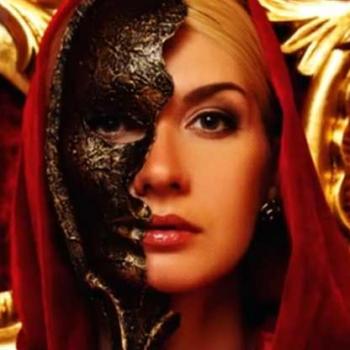How the female breast was replaced by the cross
Imagine walking into a Christian sanctuary and, instead of a cross or crucifix hanging before the altar or over the baptistery, you find a painting of Mary, breast exposed, nursing the baby Jesus.
Seem hard to imagine? For about fourteen hundred years following Jesus’ life, this was more common than most people might realize. Though today, it’s hard to imagine viewing a naked female breast in a place of worship as being appropriate, but this hang-up we have about the human form is a relatively new invention.
So what happened?
A fascinating article in a recent Christian Century magazine addresses this question, and the answers may challenge many of our preconceptions about the symbols we so fervently embrace today.
For more than eleven hundred years, the employment of a cross to represent God’s love and grace for humanity was much more of a controversial subject than it is today. Because the symbol was so closely associated with violence and criminal activity, many believed it did not evoke the sort of sense of worshipfulness the church sought to impart to its faithful.
It was not until St. Anselm and his peers in the twelfth century began to emphasize the notion that Jesus’ death specifically was the focal point of God’s redemptive acts that the cross took on greater significance in the church. Before this, the death of Jesus, in and of itself, was not singled out as any more important to human salvation than the entirety of Christ’s life, including birth, death, resurrection and everything in between.
With this new emphasis, Paul’s scriptures in the New Testament took on new importance, represented symbolically by the cross. However, for several hundred years following, the cross did not supplant images of the nursing virgin, but rather coexisted alongside them.
In fact, during the medieval period when so many suffered from disease and malnutrition, the image of Mary nursing represented God’s provision and sustenance, which so many longed for. Even such notable theologians as Clement, Anselm, St. Augustine and others depicted “Christian nourishment as coming from God’s breasts,” according to this article.
Wow.
A couple of things took place to change our perception of the propriety of the female breast as an image of worship into an object of lust and shame that should be concealed. First, the invention of the printing press made available to the masses all sorts of new information. And much like we’ve seen with the employment of the internet to purvey pornography, wherever the dissemination of information is democratized, you’ll find smut.
Whereas, before this, sexualized images of women were the exclusive privilege of the social elite, the fascination with sexual imagery exploded. Suddenly, we were aware of our nakedness, so to speak, and what once was adored now seemed dirty.
Second, science progressed to the point that human autopsies became increasingly common. As we began to learn in greater detail about the machinations of our own guts, some of the mystery held about the human body began to fall away. Instead of the whole incarnation of our selves being a holy thing, the body became merely housing for the soul: a piece of meat instead of an inscrutable sanctuary.
In an age where the mysteries of life are explained more and more often by science, and as explicit sexual imagery imposes itself in even more corners of our daily lives, I can’t help but think about the direct relationship all of this has to our perceived shame about bringing our whole selves to worship. Why, after all, would God have any interest in a part of me that others may perceive as fuel for lust? Perhaps it in everyone’s best interest if I leave that part of me at the church doors.
Better yet, let’s go a step further and not only eradicate any images of exposed human flesh from our houses of worship, but let’s also make sure that any talk of sexuality or embodied spirituality is considered taboo in the presence of God.
Considering the current trends in how our young people treat their bodies, and how the oppression of human sexuality has only driven it underground, and in some ways, made it all the more fascinating, I’d say that this puritanical exercise of ours has been nothing less than a disaster.











